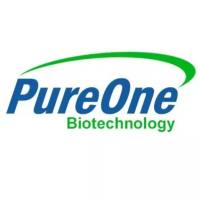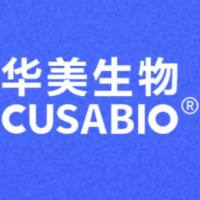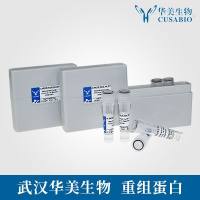Nucleic Acid Programmable Protein Arrays: Versatile Tools for Array‐Based Functional Protein Studies
互联网
- Abstract
- Table of Contents
- Materials
- Figures
- Videos
- Literature Cited
Abstract
Protein microarrays offer a global perspective on the function of expressed gene products. However, technical issues related to the stability and dynamic range of microarrays printed with purified protein have hampered their widespread adoption. Taking an alternate approach, the Nucleic Acid Programmable Protein Array (NAPPA) is constructed by spotting protein?encoding plasmid DNA at high density, in addressable fashion, on an array surface. Proteins are subsequently generated in situ just prior to experimentation using cell?free expression systems. As such, the NAPPA platform offers a unique and viable alternative that circumvents many of the inherent limitations of spotted protein arrays, enabling diverse functional protein studies including protein?small molecule, protein?protein, antigen?antibody, and protein?nucleic acid interactions. It further offers a versatile and adaptable platform amenable to a variety of capture modalities and expression systems, and, most importantly, construction of the array is accessible to any lab with an array printer and laser slide scanner. This unit is intended to provide a reference for investigators wishing to generate arrays based on this platform, and details (1) the basic construction of cDNA?based protein microarrays from DNA isolation to printing and development, (2) quality?control efforts taken to ensure the usefulness and integrity of microarray data, and (3) a particular example of the application of self?assembling protein arrays to screen for blood?borne antibody biomarkers. Curr. Protoc. Protein Sci. 64:27.2.1?27.2.26. © 2011 by John Wiley & Sons, Inc.
Keywords: protein microarray; antibodies; serum profiling
Table of Contents
- Introduction
- Strategic Planning
- Basic Protocol 1: Generation, Isolation and Quantitation of Plasmid DNA for Printing
- Basic Protocol 2: DNA Precipitation and Preparation of Print Mix for Arraying
- Basic Protocol 3: On‐Slide Expression, Serum Challenge, and Development
- Alternate Protocol 1: Direct Labeling
- Alternate Protocol 2: Amplified Labeling
- Basic Protocol 4: Image Scanning and Data Collection
- Support Protocol 1: Slide Coating for Nucleic Acid Programmable Protein Arrays
- Support Protocol 2: Quantification of DNA Printed on NAPPA Slides
- Support Protocol 3: Detection of Displayed Protein on NAPPA Slides with Anti‐GST Antibody
- Support Protocol 4: Pretitration for Signal Stabilization
- Reagents and Solutions
- Commentary
- Literature Cited
- Figures
- Tables
Materials
Basic Protocol 1: Generation, Isolation and Quantitation of Plasmid DNA for Printing
Materials
Basic Protocol 2: DNA Precipitation and Preparation of Print Mix for Arraying
Materials
Basic Protocol 3: On‐Slide Expression, Serum Challenge, and Development
Materials
Alternate Protocol 1: Direct Labeling
Alternate Protocol 2: Amplified Labeling
Basic Protocol 4: Image Scanning and Data Collection
Materials
Support Protocol 1: Slide Coating for Nucleic Acid Programmable Protein Arrays
Materials
Support Protocol 2: Quantification of DNA Printed on NAPPA Slides
Materials
|
Figures
-
Figure 27.2.1 Schematic illustrating array features printed with plasmid DNA in the presence of capture antibodies and conversion of cDNA to protein by in vitro transcription and translation. Capture antibodies tether and immobilize proteins by binding to the protein‐fused affinity tag. View Image -
Figure 27.2.2 A representative high‐density slide printed with plasmid DNA converted to protein by treatment with a cell‐free expression system (left). Plot of the DNA signal obtained from Pico Green staining against the protein signal obtained by staining with anti‐GST antibodies illustrates the relatively tight range of both DNA and protein captured on Nucleic Acid Programmable Protein Array (NAPPA). Figure originally published in (Ramachandran, ) and used here with permission. View Image -
Figure 27.2.3 A pro‐plate mini‐array used to titer serum to determine the best dilution for the full‐scale array. The outlined boxes indicate the dilution chose for each serum. The false color scheme is white saturated>red>orange>yellow>green>blue. View Image -
Figure 27.2.4 (A ) Scraped features that would give erroneously low signal. (B ) Regional biases in slide signal intensity most likely due to technical errors in development. (C ) A microscopic fiber on the array surface that spans a single feature would contribute positive error to signal intensity. (D ) Poor spot morphology of features on the left (versus good features on the right) that may arise from drying during serum challenge and development. View Image -
Figure 27.2.5 Plots of the median intensity for all features in a sub‐array or block (printed by a single pin) reveal differences in immunoreactive signal that persist over the majority of the serum‐challenged array (i.e., pin 20, pin 46, pin 35), suggesting pin‐dependent artifacts that may require correction. View Image -
Figure 27.2.6 Representative histogram of log2 ‐transformed signal intensity from a serum‐challenged NAPPA slide developed with anti‐human secondary antibodies and tyramide signal amplification. View Image -
Figure 27.2.7 Pseudo‐colored images (left) and scatter plots (right) for replicate arrays challenged with the same serum samples on separate days with computed correlation coefficient. View Image -
Figure 27.2.8 Replicate images of two Pico Green‐stained slides from a single print batch (left). Signal‐intensity data extracted from each and plotted against one another show high concordance between values and verify reproducible printing (right). View Image -
Figure 27.2.9 Replicate images of two anti‐GST stained slides from a single print batch developed by amplified labeling (left). Signal‐intensity data extracted from each and plotted against one another show high concordance between values and verify reproducible protein expression and display (right). View Image
Videos
-
DNA isolation and array sample preparation9:38Play Video
-
Preparation of Master Mix and the arrayer4:21Play Video
-
Slide expression, detection, and imaging6:57Play Video
-
Aminosilane slide coating2:32Play Video
-
Detection of array-immobilized DNA2:18Play Video
Literature Cited
| Literature Cited | |
| Andersen‐Beckh, B. and Niemann, H., 1995. In vitro transcription and translation in a cell‐free system from Clostridium tetani. Methods Mol. Biol. 37:253‐263. | |
| Anderson, K.S., Ramachandran, N., Wong, J., Raphael, J.V., Hainsworth, E., Demirkan, G., Cramer, D., Aronzon, D., Hodi, F.S., Harris, L., Logvinenko, T., and LaBaer, J., 2008. Application of protein microarrays for multiplexed detection of antibodies to tumor antigens in breast cancer. J. Proteome Res. 7:1490‐1499. | |
| Baekkeskov, S., Nielsen, J.H., Marner, B., Bilde, T., Ludvigsson, J., and Lernmark, A., 1982. Autoantibodies in newly diagnosed diabetic children immunoprecipitate human pancreatic islet cell proteins. Nature 298:167‐169. | |
| Ballard, J.L., Peeva, V.K., deSilva, C.J., Lynch, J.L., and Swanson, N.R., 2007. Comparison of Alexa Fluor and CyDye for practical DNA microarray use. Mol. Biotechnol. 36:175‐183. | |
| Blass, S., Engel, J.M., and Burmester, G.R., 1999. The immunologic homunculus in rheumatoid arthritis. Arthritis Rheum. 42:2499‐2506. | |
| Branham, W.S., Melvin, C.D., Han, T., Desai, V.G., Moland, C.L., Scully, A.T., and Fuscoe, J.C. 2007. Elimination of laboratory ozone leads to a dramatic improvement in the reproducibility of microarray gene expression measurements. BMC Biotechnol. 7:8‐16. | |
| Christie, M.R., Hollands, J.A., Brown, T.J., Michelsen, B.K., and Delovitch, T.L. 1993. Detection of pancreatic islet 64,000 M(r) autoantigens in insulin‐dependent diabetes distinct from glutamate decarboxylase. J Clin. Invest. 92:240‐248. | |
| Cordes, V.C. and Krohne, G., 1993. Sequential O‐glycosylation of nuclear pore complex protein gp62 in vitro. Eur. J. Cell Biol. 60:185‐195. | |
| Cretich, M., Damin, F., Pirri, G., and Chiari, M. 2006. Protein and peptide arrays: Recent trends and new directions. Biomol. Eng. 23:77‐88. | |
| Ernst, V., Levin, D.H., Foulkes, J.G., and London, I.M. 1982. Effects of skeletal muscle protein phosphatase inhibitor‐2 on protein synthesis and protein phosphorylation in rabbit reticulocyte lysates. Proc. Natl. Acad. Sci. U.S.A. 79:7092‐7096. | |
| Fare, T.L., Coffey, E.M., Dai, H., He, Y.D., Kessler, D.A., Kilian, K.A., Koch, J.E., LeProust, E., Marton, M.J., Meyer, M.R., Stoughton, R.B., Tokiwa, G.Y., and Wang, Y. 2003. Effects of atmospheric ozone on microarray data quality. Anal. Chem. 75:4672‐4675. | |
| Finkelstein, D., Janis, M., Williams, A., Steiger, K., and Retief, J. 2006. DNA microarrays and related genomic techniques. In Design, Analysis and Interpretation of Experiments (D. Allison, G. Page, T. Beasley, and J. Edwards, eds.) pp. 29‐55. Taylor and Francis Group, Durham, N.C. | |
| Gu, Q., Sivanandam, T.M., and Kim, C.A. 2006. Signal stability of Cy3 and Cy5 on antibody microarrays. Proteome Sci. 4:21. | |
| Hueber, W., Kidd, B.A., Tomooka, B.H., Lee, B.J., Bruce, B., Fries, J.F., Sonderstrup, G., Monach, P., Drijfhout, J.W., van Venrooij, W.J., Utz, P.J., Genovese, M.C., and Robinson, W.H. 2005. Antigen microarray profiling of autoantibodies in rheumatoid arthritis. Arthritis Rheum. 52:2645‐2655. | |
| Jagus, R., Joshi, B., Miyamoto, S., and Beckler, G.S. 1998. In vitro translation. Curr. Protoc. Cell Biol. 00:11.2.1‐11.2.25 | |
| Klammt, C., Schwarz, D., Dotsch, V., and Bernhard, F. 2007. Cell‐free production of integral membrane proteins on a preparative scale. Methods Mol. Biol. 375:57‐78. | |
| Li, Q.Z., Zhou, J., Wandstrat, A.E., Carr‐Johnson, F., Branch, V., Karp, D.R., Mohan, C., Wakeland, E.K., and Olsen, N.J. 2007. Protein array autoantibody profiles for insights into systemic lupus erythematosus and incomplete lupus syndromes. Clin. Exp. Immunol. 147:60‐70. | |
| Litowski, J.R. and Hodges, R.S. 2002. Designing heterodimeric two‐stranded alpha‐helical coiled‐coils: Effects of hydrophobicity and alpha‐helical propensity on protein folding, stability, and specificity. J. Biol. Chem. 277:37272‐37279. | |
| Los, G.V. and Wood, K., 2007. The HaloTag: A novel technology for cell imaging and protein analysis. Methods Mol. Biol. 356:195‐208. | |
| Ludwig, N., Keller, A., Comtesse, N., Rheinheimer, S., Pallasch, C., Fischer, U., Fassbender, K., Steudel, W.I., Lenhof, H.P., and Meese, E. 2008. Pattern of serum autoantibodies allows accurate distinction between a tumor and pathologies of the same organ. Clin. Cancer Res. 14:4767‐4774. | |
| Madoz‐Gurpide, J., Kuick, R., Wang, H., Misek, D.E., and Hanash, S.M. 2008. Integral protein microarrays for the identification of lung cancer antigens in sera that induce a humoral immune response. Mol. Cell Proteomics 7:268‐281. | |
| Marina, O., Biernacki, M.A., Brusic, V., and Wu, C.J. 2008. A concentration‐dependent analysis method for high density protein microarrays. J. Proteome Res. 7:2059‐2068. | |
| Montor, W.R., Huang, J., Hu, Y., Hainsworth, E., Lynch, S., Kronish, J.W., Ordonez, C.L., Logvinenko, T., Lory, S., and LaBaer, J. 2009. Genome‐wide study of Pseudomonas aeruginosa outer membrane protein immunogenicity using self‐assembling protein microarrays. Infect. Immun. 77:4877‐4886. | |
| Murphy, P.J., Kanelakis, K.C., Galigniana, M.D., Morishima, Y., and Pratt, W.B. 2001. Stoichiometry, abundance, and functional significance of the hsp90/hsp70‐based multiprotein chaperone machinery in reticulocyte lysate. J. Biol. Chem. 276:30092‐30098. | |
| Ramachandran, N., Hainsworth, E., Bhullar, B., Eisenstein, S., Rosen, B., Lau, A.Y., Walter, J.C., and LaBaer, J. 2004. Self‐assembling protein microarrays. Science 305:86‐90. | |
| Ramachandran, N., Raphael, J.V., Hainsworth, E., Demirkan, G., Fuentes, M.G., Rolfs, A., Hu, Y., and LaBaer, J. 2008. Next‐generation high‐density self‐assembling functional protein arrays. Nat. Methods 5:535‐538. | |
| Redpath, N.T. and Proud, C.G., 1989. The tumour promoter okadaic acid inhibits reticulocyte‐lysate protein synthesis by increasing the net phosphorylation of elongation factor 2. Biochem J. 262:69‐75. | |
| Reimers, M. and Weinstein, J.N. 2005. Quality assessment of microarrays: Visualization of spatial artifacts and quantitation of regional biases. BMC Bioinformatics 6:166‐174. | |
| Sakurai, H., Izumi, S., and Tomino, S. 1990. In vitro transcription of the plasma protein genes of Bombyx mori. Biochim. Biophys. Acta 1087:18‐24. | |
| Schumacher, R.J., Hurst, R., Sullivan, W.P., McMahon, N.J., Toft, D.O., and Matts, R.L. 1994. ATP‐dependent chaperoning activity of reticulocyte lysate. J. Biol. Chem. 269:9493‐9499. | |
| Simon, M., Girbal, E., Sebbag, M., Gomes‐Daudrix, V., Vincent, C., Salama, G., and Serre, G. 1993. The cytokeratin filament‐aggregating protein filaggrin is the target of the so‐called “antikeratin antibodies,” autoantibodies specific for rheumatoid arthritis. J. Clin. Invest. 92:1387‐1393. | |
| Söderberg, A., Myhre, A.G., Ekwall, O., Gebre‐Medhin, G., Hedstrand, H., Landgren, E., Miettinen, A., Eskelin, P., Halonen, M., Tuomi, T., Gustafsson, J., Husebye, E.S., Perheentupa, J., Gylling, M., Manns, M.P., Rorsman, F., Kampe, O., and Nilsson, T. 2004. Prevalence and clinical associations of 10 defined autoantibodies in autoimmune polyendocrine syndrome type I. J. Clin. Endocrinol. Metab. 89:557‐562. | |
| Somers, K., Govarts, C., Stinissen, P., and Somers, V. 2009. Multiplexing approaches for autoantibody profiling in multiple sclerosis. Autoimmun. Rev. 8:573‐579. | |
| Speel, E.J., Hopman, A.H., and Komminoth, P. 2006. Tyramide signal amplification for DNA and mRNA in situ hybridization. Methods Mol. Biol. 326:33‐60. | |
| Wenzlau, J.M., Juhl, K., Yu, L., Moua, O., Gottlieb, P., Rewers, M., Eisenbarth, G.S., Jensen, J., Davidson, H.W., and Hutton, J.C. 2007. The cation efflux transporter ZnT8 (Slc30A8) is a major autoantigen in human type 1 diabetes. Proc. Natl. Acad. Sci. U.S.A. 104:17040‐17045. | |
| Wuu, J.J. and Swartz, J.R. 2008. High yield cell‐free production of integral membrane proteins without refolding or detergents. Biochim. Biophys. Acta 1778:1237‐1250. | |
| Zhang, W., Shmulevich, I., and Astola, J. 2004. Microarray Quality Control. Wiley‐Liss, Hoboken, N.J. | |
| Zhu, X., Gerstein, M., and Snyder, M. 2006. ProCAT: A data analysis approach for protein microarrays.Genome Biol. 7:R110. | |
| Zubay, G. 1973. In vitro synthesis of protein in microbial systems. Ann. Rev. Genet. 7:267‐287. |







